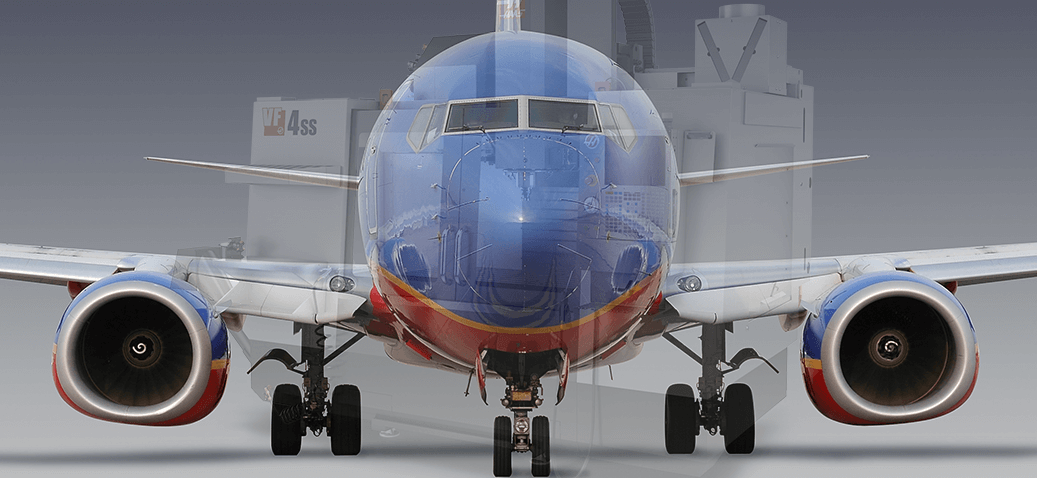
Applying the Southwest Business Model to Machine Shops
Jay Jacobs was the founder and CEO of RAPID, a CNC machining and sheet metal shop that grew to $50M in sales and was sold to Proto Labs, Inc. (PRLB) in 2017 for $120M. Today, Jay is a champion for American manufacturing and is working through Paperless Parts to enable job shop owners to compete in today’s increasingly digital and web-based business world.
One of the basic rules I had in running a job shop was to always look to simplify operations. Simpler operations mean fewer things that can go wrong and thus create friction. Southwest Airlines was my role model and a great example to follow.
Most airlines fly a variety of different plane types and in most cases, planes from different aircraft manufacturers. In contrast, Southwest only flies the best-selling commercial airplane, the Boeing 737. A really simple concept, but one with incredibly far reaching benefits and cost saving efficiencies.
Here are some of the ways Southwest’s operations are simplified by flying only 737s. Start with people. Pilots and flight attendants only have to know one plane variety. Mechanics only work on one plane type. Baggage handlers know the interior space. The result is training time decreases, confusion (friction) decreases, and mistakes decrease. Employees are happier and that makes customers happier. Then think about servicing the planes. Maintenance costs decreases, up-time increases, and plane turnaround time decreases. Total spare parts are minimized (one plane type rather than ten or more), while at the same time a broader range of all part numbers for the plane type can be justified to stock because of the larger quantity of same planes. If a plane has a mechanical issue, their airport hubs have spare planes that can be easily swapped in without disruption. The planes having the same size and shape makes ground logistics, like scheduling and cleaning, easier.
How can this be applied to a machine shop? Imagine if you were running all Haas machining centers. Your machinists can jump from machine to machine at will because the controllers are basically the same throughout the different models, which allows everyone to run every machine. Almost anyone hired should have Haas experience, minimizing training. Huge win here! Systems can be standardized. Maintenance gets done because it is more routine. Vises and other fixturing pieces are minimized and tooling can be standardized so jobs can be preset to keep spindle uptime maximized. The chaos in programming for different machines is eliminated – jobs can probably be run on almost any machine and you only have one post to worry about. Quoting is easier and now can be more friendly to quoting and ordering automation tools. A center goes down, possibly the spindle seizes? Move that rush job to another machine. Maybe you even have a spindle in stock and can be running again in less than a day. Perhaps someone is certified for level 1 maintenance and can perform basic diagnostics, ensuring the service engineer has the right part(s) when they show up. All Haas machines means you are a more important customer to the Haas distributor and will get better service.
There are efficiency losses by having only one machining supplier. However, my conclusion was that, as a job shop owner, I only had so much time for problem solving. My preference was to spend it on things that made me money like talking to customers instead of trying to juggle the schedule to get the part on the right machine, hire someone who can run my one-up machine with a convoluted controller and agonizing for a week waiting to get a machine back up and running.
You may be saying, “This sounds great, but I have a mix of machines now and this is not practical.” Well, when Rapid Machining started, we had two old Mazaks, a couple Prototrak CNC lathes, and a couple Bridgeport CNC type machines. Nothing new. We simply made the commitment to the Southwest model, started by buying one Haas machining center, and everytime we needed another machine, we didn’t waver and always bought Haas. Over time we sold the Mazaks which always had something breaking, making room for more Haas’ (although we kept the Bridgeports and Prototraks). Note that Haas was the best choice for us – for you, another brand may be better depending on your shop’s specialty.
Simple made Southwest a success. For RAPID, simple made business easier and I think was a huge factor in our success.
-Jay Jacobs
Connect with me on LinkedIn to stay up-to-date with future posts:
https://www.linkedin.com/in/jacobsjay/

